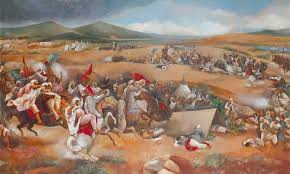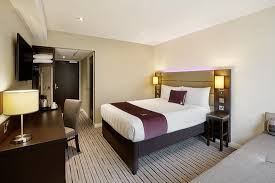The Rich Tapestry of Moroccan History
Located at the crossroads of Africa, Europe, and the Middle East, Morocco boasts a history as vibrant and diverse as its landscapes. From ancient Berber civilizations to Arab conquests and European influences, Moroccan history is a rich tapestry woven with tales of conquest, trade, and cultural exchange.
Ancient Roots
The history of Morocco dates back thousands of years to the time of the indigenous Berber tribes who inhabited the region. These early inhabitants left behind a legacy of impressive monuments such as the ancient city of Volubilis, a UNESCO World Heritage site that showcases the architectural prowess of the Roman Empire in North Africa.
Arab Conquests
In the 7th century AD, Arab armies swept across North Africa, bringing Islam to the region and establishing dynasties that would shape Moroccan history for centuries to come. The Umayyad and Abbasid caliphates left their mark on Morocco through architecture, language, and religion, laying the foundations for what would become a unique blend of Arab and Berber cultures.
The Golden Age of Islamic Civilization
During the medieval period, Morocco experienced a golden age under dynasties such as the Almoravids, Almohads, and Merinids. These rulers presided over a flourishing civilization marked by advancements in science, literature, and art. The cities of Fez, Marrakech, and Rabat became centres of learning and culture in the Islamic world.
European Influence
In the 15th century, European powers began vying for control over trade routes in North Africa. Portugal established trading posts along the Moroccan coast while Spain sought to exert influence over territories in the south. The Ottoman Empire also played a role in shaping Moroccan history through alliances with local rulers.
Modern Era
In 1956, Morocco gained independence from French and Spanish colonial rule under King Mohammed V. Since then, Morocco has embarked on a path of modernization while preserving its rich cultural heritage. Today, visitors to Morocco can explore ancient medinas, wander through bustling souks, and marvel at architectural wonders that tell the story of this fascinating country.
Arab Conquests and Their Impact on Moroccan Culture and History
Power and Prestige: The Major Dynasties of Medieval Morocco
4. Colonial Enc
- What are the origins of Morocco’s indigenous Berber tribes?
- How did Arab conquests influence Moroccan culture and history?
- What were the major dynasties that ruled over Morocco during the medieval period?
- How did European powers impact Morocco’s history through colonization and trade?
- Who were the key figures in Morocco’s struggle for independence from colonial rule?
- What are some of the architectural wonders in Moroccan cities that showcase its historical significance?
- How has modernization affected traditional Moroccan customs and way of life?
- Where can I learn more about Moroccan history and culture?
What are the origins of Morocco’s indigenous Berber tribes?
The origins of Morocco’s indigenous Berber tribes can be traced back to ancient times, long before recorded history. Believed to be the original inhabitants of North Africa, the Berbers have a rich and complex history that predates the Arab conquest of the region. Descendants of prehistoric populations who inhabited the Maghreb, the Berber tribes developed distinct languages, cultures, and traditions that have endured through centuries of migration, trade, and interaction with various conquerors. Today, the Berber people continue to play a significant role in shaping Morocco’s cultural identity and heritage.
How did Arab conquests influence Moroccan culture and history?
The Arab conquests in Morocco had a profound impact on the country’s culture and history. With the arrival of Arab armies in the 7th century AD, Islam was introduced to the region, shaping religious practices, governance, and societal norms. The Arab conquerors brought with them a new language, architecture, and legal system that blended with existing Berber traditions to create a unique Moroccan identity. The fusion of Arab and Berber cultures gave rise to a vibrant artistic and intellectual landscape, evident in the intricate tilework of mosques, the poetry of Sufi mystics, and the establishment of renowned centres of learning. The Arab conquests not only transformed Morocco’s cultural landscape but also laid the foundation for dynasties that would rule the country for centuries to come, leaving an indelible mark on its history.
What were the major dynasties that ruled over Morocco during the medieval period?
During the medieval period, Morocco was shaped by several major dynasties that left a lasting impact on its history. Prominent among these dynasties were the Almoravids, Almohads, and Merinids. The Almoravids, known for their military prowess and religious zeal, established a powerful empire that extended across North Africa and Spain. The Almohads, who succeeded the Almoravids, introduced innovative architectural styles and fostered a period of intellectual flourishing in cities like Marrakech. Lastly, the Merinids ruled over Morocco during a time of cultural renaissance, overseeing the construction of iconic landmarks such as the Hassan Tower in Rabat. These dynasties not only shaped the political landscape of Morocco but also contributed to its rich artistic and intellectual heritage.
How did European powers impact Morocco’s history through colonization and trade?
European powers had a significant impact on Morocco’s history through colonization and trade. During the 19th and early 20th centuries, countries such as France and Spain established colonial rule over various regions of Morocco, leading to political upheaval and social change. The imposition of European control disrupted traditional systems of governance and trade, while also introducing new technologies and ideas. The scramble for resources and strategic interests in North Africa further shaped Morocco’s economy and society, leaving a lasting legacy that continues to influence the country’s development today.
Who were the key figures in Morocco’s struggle for independence from colonial rule?
During Morocco’s struggle for independence from colonial rule, several key figures emerged as leaders of the movement. One of the most prominent figures was Sultan Mohammed V, who became a symbol of resistance against French and Spanish colonial powers. His steadfast commitment to Moroccan sovereignty and unity inspired the masses to rally behind the cause of independence. Other notable figures include Allal al-Fassi, a nationalist leader and founder of the Istiqlal Party, and Mehdi Ben Barka, a charismatic revolutionary who played a significant role in mobilising support for independence. Together, these key figures led the charge for Morocco’s liberation from colonial domination, paving the way for a new era of self-determination and national pride.
What are some of the architectural wonders in Moroccan cities that showcase its historical significance?
Moroccan cities boast a plethora of architectural wonders that serve as living testaments to the country’s rich historical significance. From the intricate mosaics and towering minarets of the Hassan II Mosque in Casablanca to the medieval fortress walls of the UNESCO-listed city of Chefchaouen, each structure tells a story of Morocco’s diverse cultural influences. The ancient medina of Fez, with its labyrinthine streets and ornate palaces, stands as a prime example of Islamic architecture at its finest. Meanwhile, the Kasbah of the Udayas in Rabat offers a glimpse into Morocco’s past with its stunning Andalusian gardens and well-preserved fortifications. These architectural marvels not only showcase Morocco’s historical depth but also serve as beacons for travellers seeking to immerse themselves in the country’s captivating heritage.
How has modernization affected traditional Moroccan customs and way of life?
The process of modernization has brought about significant changes to traditional Moroccan customs and way of life. As Morocco embraces technological advancements, urban development, and globalisation, there is a gradual shift in societal norms and practices. While many traditional customs remain deeply rooted in Moroccan culture, the influence of modernity can be seen in changing family structures, evolving gender roles, and shifts in dietary habits. The younger generation is increasingly exposed to Western influences through media and education, leading to a blending of traditional values with contemporary lifestyles. Despite these changes, Morocco continues to cherish its rich heritage and strives to strike a balance between preserving age-old traditions and embracing the opportunities that modernization brings.
Where can I learn more about Moroccan history and culture?
If you are eager to delve deeper into the captivating realms of Moroccan history and culture, there are abundant resources available to satisfy your curiosity. From reputable museums and historical sites scattered across Morocco to engaging books, documentaries, and online platforms dedicated to the country’s rich heritage, there are numerous avenues for exploration. Websites like morocco-online.net offer a treasure trove of information, articles, and insights that illuminate the diverse facets of Moroccan history and culture. Embark on a journey of discovery through the vibrant tapestry of Morocco’s past and present, allowing yourself to be immersed in its enchanting narratives and traditions.



